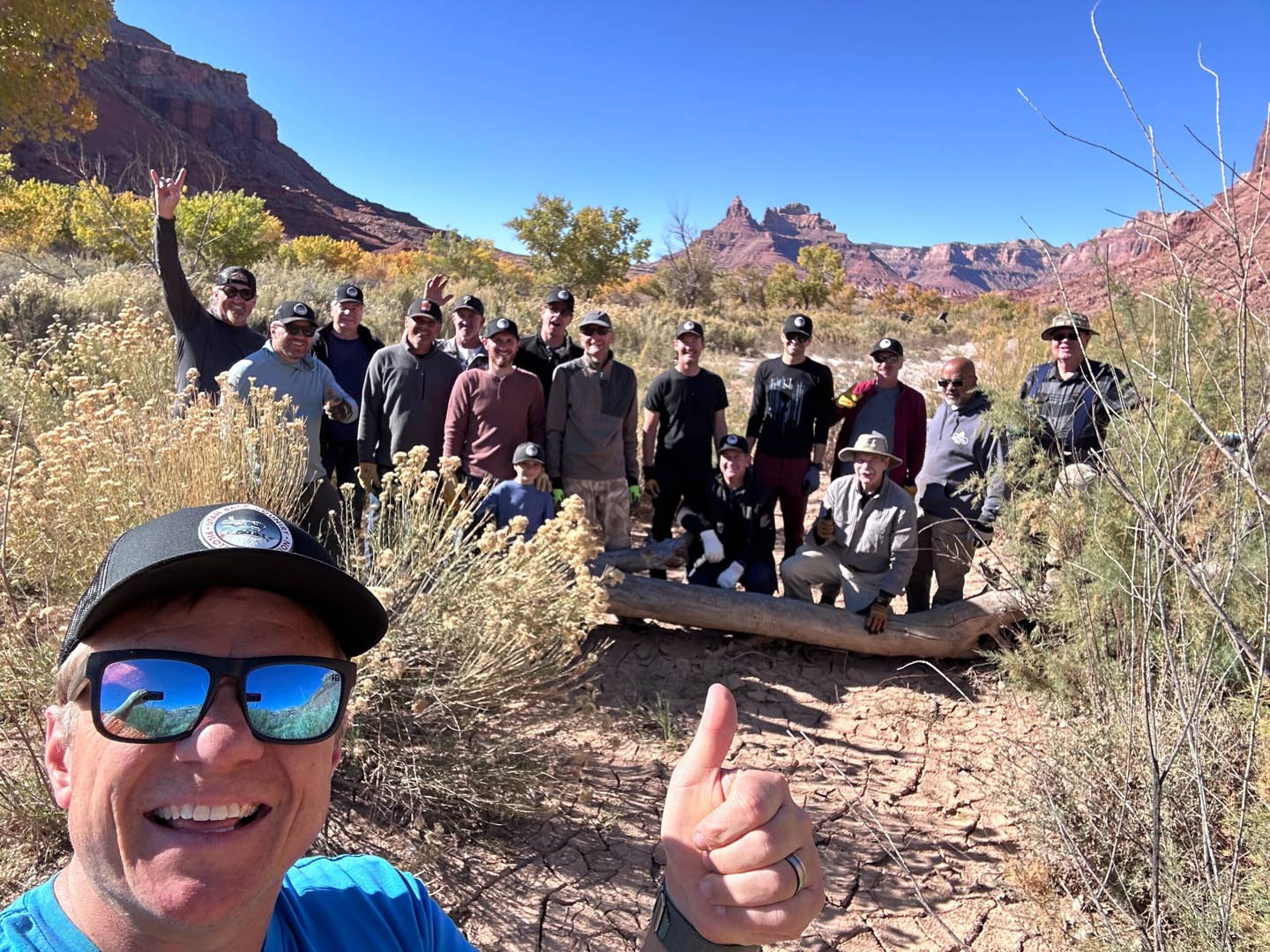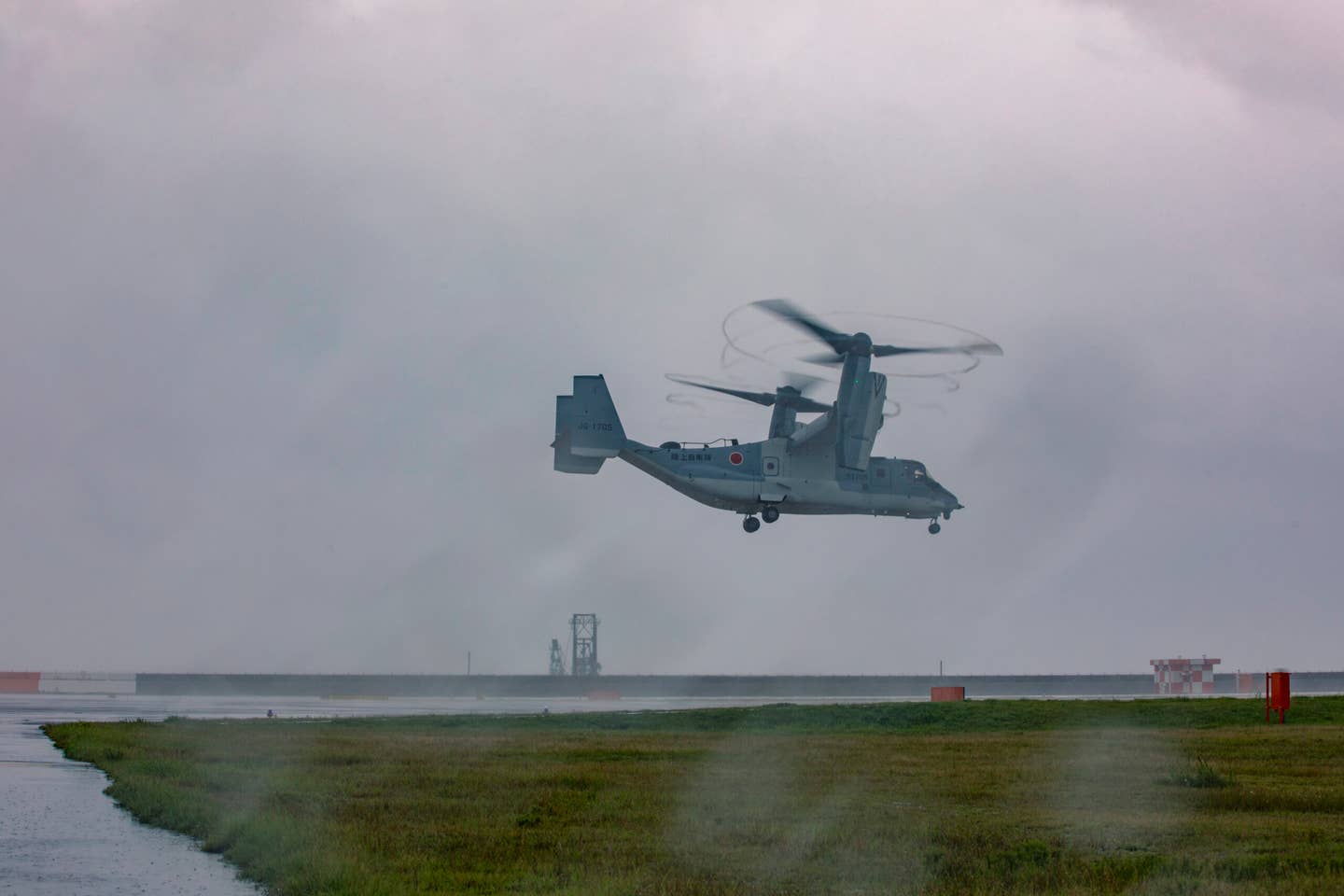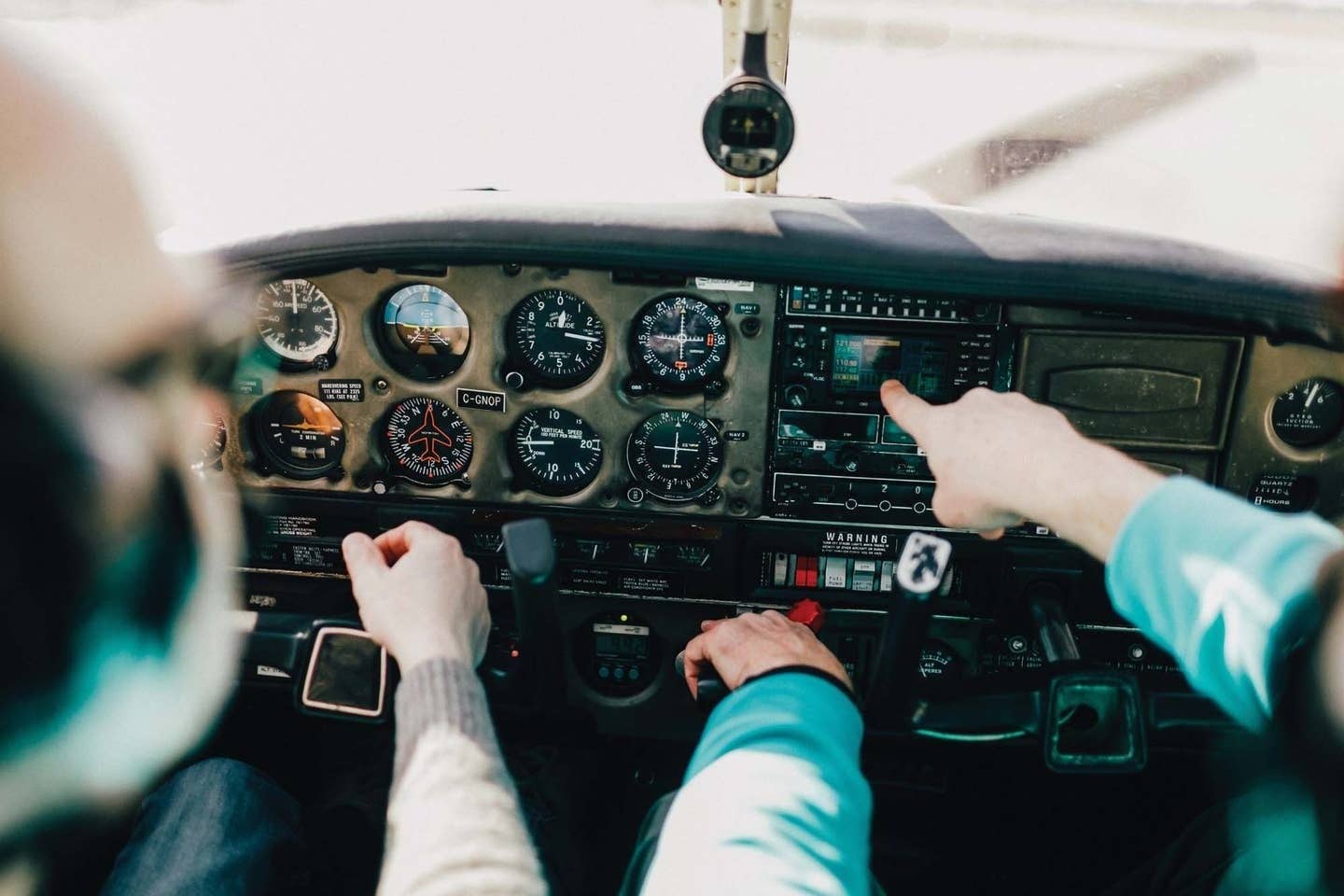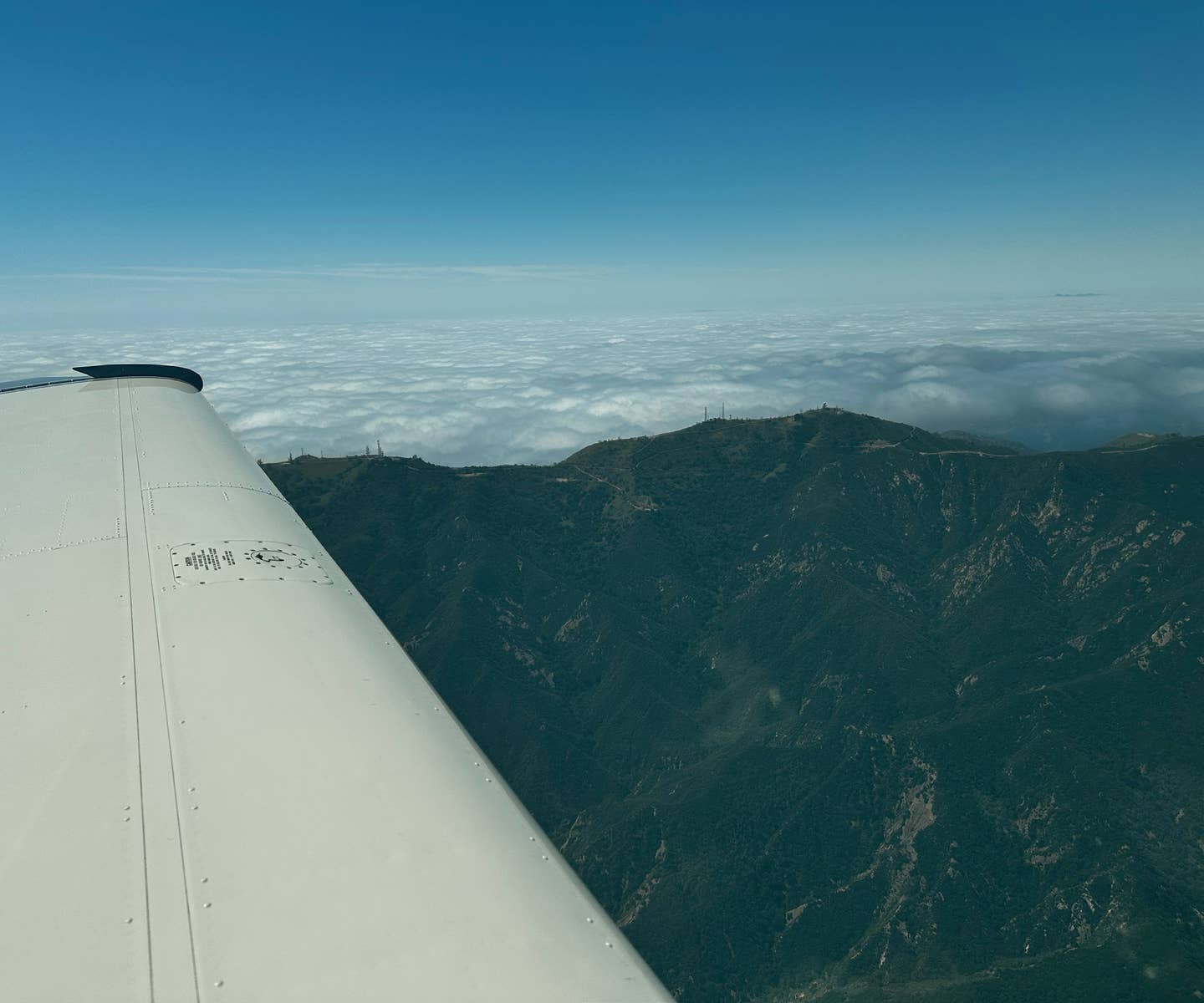
It was 4 o'clock on a Thursday afternoon in March, a beautiful, clear, early spring day. A Cirrus SR22 was approaching the private airport of Aero Plantation, a fly-in community southeast of Charlotte, North Carolina. The 2,400-foot runway is 06/24; its elevation is 624 feet msl. At the nearest reporting facility, Monroe, seven miles to the east, the wind was out of the northwest, 310 at 11, gusting to 20.
Approaching from the south, the pilot of the Cirrus announced his intentions on the Common Traffic Advisory Frequency. He crossed midfield at an altitude of about 800 feet — slightly below the standard pattern altitude — and entered a left downwind leg for Runway 06. He reported turning base on the CTAF.
As the Cirrus was turning from base to final, less than 250 feet above the ground, it stalled and entered a vertical dive. The pilot fired the rocket-actuated airplane parachute, but it did not have time to deploy before the Cirrus plunged through trees into the backyard of a house 2,000 feet from the runway threshold.
The pilot, 51, died in the crash. A local businessman, he had been flying for more than 10 years and had 600 hours, more than half of which he had logged as dual. He was very familiar with the airplane, having flown 430 hours in it and an SR20 that he had owned previously. He was also familiar with the airport, which has a slight hump at its western end and then slopes downhill toward the east.
Examination of the wreckage gave no indication of a mechanical problem. The engine was running at impact, and the controls were intact. The flaps were retracted. The data stored in the Avidyne flight computer were downloaded and analyzed by the NTSB's Vehicle Recorders Division. It put the airplane at 838 feet msl — 214 feet above the threshold of Runway 6 — in a 32-degree left bank. Its rate of descent was 444 feet per minute, its indicated airspeed 60.3 knots, and its pitch attitude five degrees nose up.
Unfortunately, the NTSB report does not provide any data preceding the last hit, and so it is impossible to tell whether these are representative numbers or transients encountered during the departure into the spin. The height above the threshold at 2,000 feet out is about right for a six-degree approach. The rate of descent is on the low side; in fact, it is little more than half of what would be expected if the approach were being flown from this position at a reasonable flaps-up approach speed of 80 to 85 knots. The speed, however, is the flaps-down, wings-level stalling speed. The very low indicated speed could suggest rapid deceleration, instrument error due to the stall (which may already have occurred) or a sudden gust from behind the airplane.
Many things are unclear about this accident, beginning with the reasons for the pilot's decision to land on Runway 6. A resident of the airport community told the NTSB investigator that "the surrounding terrain favors landing on Runway 24 and takeoffs on Runway 6." That preference is probably due in part to the fact that Runway 6 is downhill and Runway 24 is uphill, but also to concern about noise. The terrain all around is flat, but there are a number of houses a half-mile from the approach end of Runway 6. The area beyond the east end of the runway, on the other hand, is much more sparsely populated.
The wind, if it was similar to that at Monroe, was more or less a direct crosswind, so one could have landed either way. The runway slope favored 24. But it is possible that the local wind was more northerly than at Monroe and that, after overflying the airport to get a look at the windsock, the pilot decided to use Runway 6. There is no indication in the NTSB report that the pilot received advice about the wind or the preferred runway from someone on the ground, but he may have.
The next puzzle is why the pilot did not use flaps. Perhaps he felt that the airplane would be more controllable in a gusty crosswind without them, the theory being that at higher speeds wind effects are proportionally smaller.
By flying the pattern on the upwind side of the airport, the pilot placed himself in a more difficult position than necessary. Having the wind behind you on base creates two problems. One is that it tends to push you past the runway. A 10-knot wind carries you 100 feet every six seconds; you must therefore either fly an unusually wide pattern to start with, if you wish to use your customary timings and bank angles, or you must shorten the time spent on base and make your turns tighter. The latter is probably the more common scenario, since pilots often do not realize until they are on the base leg how the wind is going to affect them. The other difficulty with a following wind on the base leg is only a difficulty if the wind is gusty. A gust from behind causes the airplane to lose lift and settle. If the airplane is already flying close to its stalling speed and the pilot reacts by raising the nose, the wing might stall.
A pilot who finds himself overshooting the final approach course on base leg, but who is reluctant to bank steeply so close to the ground or does not have a sufficient airspeed cushion to allow a steep bank, might unconsciously use rudder to bring the nose around to the runway. The combination of low speed and crossed controls is conducive to a stall and spin. For that matter, the impression of speed over the ground that is produced by a tailwind at low altitude might cause a pilot to feel that he is going too fast, and he might instinctively raise the nose. Many of the dangers attributed to wind effects in the traffic pattern are actually due to visual impressions of speed or drift that become very strong when one is very close to the ground, but are not necessarily related to the actual speed or attitude of the airplane with respect to the air.
Toxicological examination of tissue samples from the pilot disclosed the presence of two anti-allergy medications, pseudoephedrine (Sudafed) in urine at an unspecified concentration and diphenhydramine (Benadryl) in blood and urine at a concentration of 19 nanograms per milliliter. Zolpidem (Ambien, a sleeping pill) was present in blood and urine at 15 nanograms per milliliter.
The listed side effects of the over-the-counter allergy medications include drowsiness. Ambien, on the other hand, is noted for a wide range of unintended consequences, including, in some people, altered mental states, temporary amnesia and bizarre behavior. The Federal Air Surgeon's Medical Bulletin states that pilots may use Ambien, provided that they take it no more than twice a week and not within 24 hours of flying. Ambien is rapidly metabolized and excreted, and the concentration present in the pilot's remains is not consistent with a delay of 24 hours or more.
The probable cause of the accident, the NTSB decided, was the pilot's failure to maintain sufficient airspeed while maneuvering; the tailwind on base leg was a contributing factor. No mechanical problem or other compelling external cause was found.
It is clear, indeed, that the pilot allowed the airplane to get too slow — way too slow. A 30-degree bank adds five knots to the stalling speed, which, with flaps up, would have been between 65 and 70 knots depending on weight. The pattern speed should be 20 to 30 percent higher than the stalling speed, and some pilots would add a few more knots for the gusty wind. The runway was on the short side, but not so short as to require an abnormally slow approach. Even if we assume that the 60.3 knot recorded speed was an unrepresentative transient, it is still clear that the pilot should have been going 10 to 20 knots faster than he was.
The thing about accidents, however, is that their prologues often involve minor, everyday, even accidental decisions that cumulatively set the stage for a big mistake. The decision to fly the downwind leg on the windward side of the runway was not causal in and of itself: nor was the decision not to use flaps. But somehow in this sequence of perhaps contributory events, the pilot lost track of his speed. That, as the NTSB concluded, was the main event — the big error that makes the little previous decisions, harmless in and of themselves, look like errors as well.
This article is based on the NTSB's report of the accident and is intended to bring the issues raised to our readers' attention. It is not intended to judge or to reach any definitive conclusions about the ability or capacity of any person, living or dead, or any aircraft or accessory.

Sign-up for newsletters & special offers!
Get the latest FLYING stories & special offers delivered directly to your inbox






